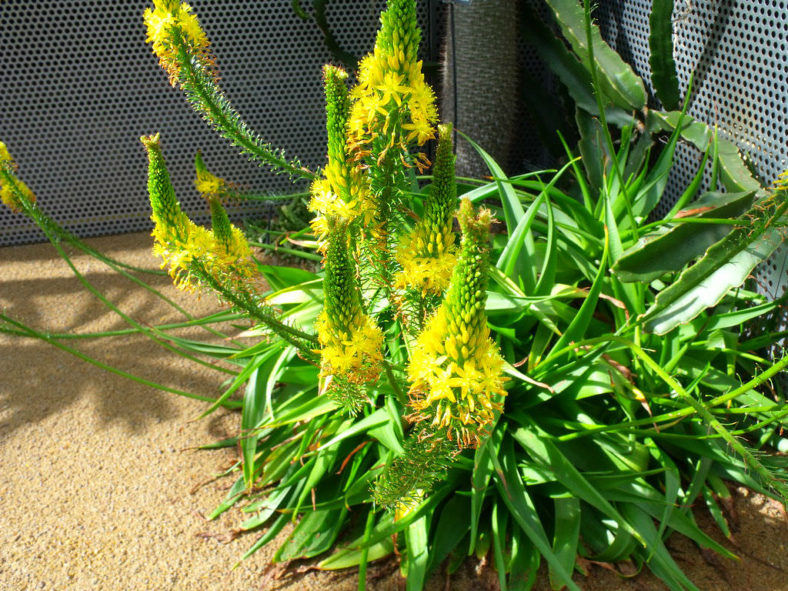Bulbine is a genus of succulent plants named for the bulb-shaped tuber of many species. It contains about 76 species native to southern Africa and Australia. The genus is part of the family Asphodelaceae, making it a botanical cousin to the more well-known genus Aloe. Bulbines grow as a clump of narrow fleshy leaves; some species produce a caudex or tuber.
These plants produce 10 to 12 flower stalks, each with clusters of small, fragrant, yellow (or sometimes pink or orange) flowers. The stalks continue to elongate throughout the growing season, producing new flowers at the tip.
One tropical species, Bulbine natalensis, is being studied for its ability to boost animal testosterone production. The sap of the fleshy leaves of the more commonly grown species, Bulbine frutescens, is used medicinally, much like Aloe vera gel.
Growing Conditions and General Care
Caring for Bulbine does not require much effort, and neglect does not prevent the delicate blooms from rising 12 to 18 inches (30 to 45 cm) above the foliage.

These plants are adaptable to a wide range of soil types. Growing Bulbine is a good choice for arid gardens, as it is drought-tolerant. For this reason, they are often found in rock gardens with poor soil. Bulbine plants are hardy in USDA Plant Hardiness Zones 9 to 11 but can grow in lower zones as annuals.
Locate Bulbines in a sunny to lightly shaded area of the garden. Plant the rhizomes in well-draining soil and water weekly until plants are established. Once established, plants are drought-tolerant, although they benefit from supplemental water during periods of drought. Feed your plants with a balanced liquid fertilizer once a month during the growing season.
Deadheading is unnecessary, but it will encourage the plants to produce more flowers.
Propagation
Propagation is from seed, cuttings, or division of clumps, and should be done in spring.
Source: gardeningknowhow.com
Links
- Back to genus Bulbine
- Succupedia: Browse succulents by Scientific Name, Common Name, Genus, Family, USDA Hardiness Zone, Origin, or cacti by Genus